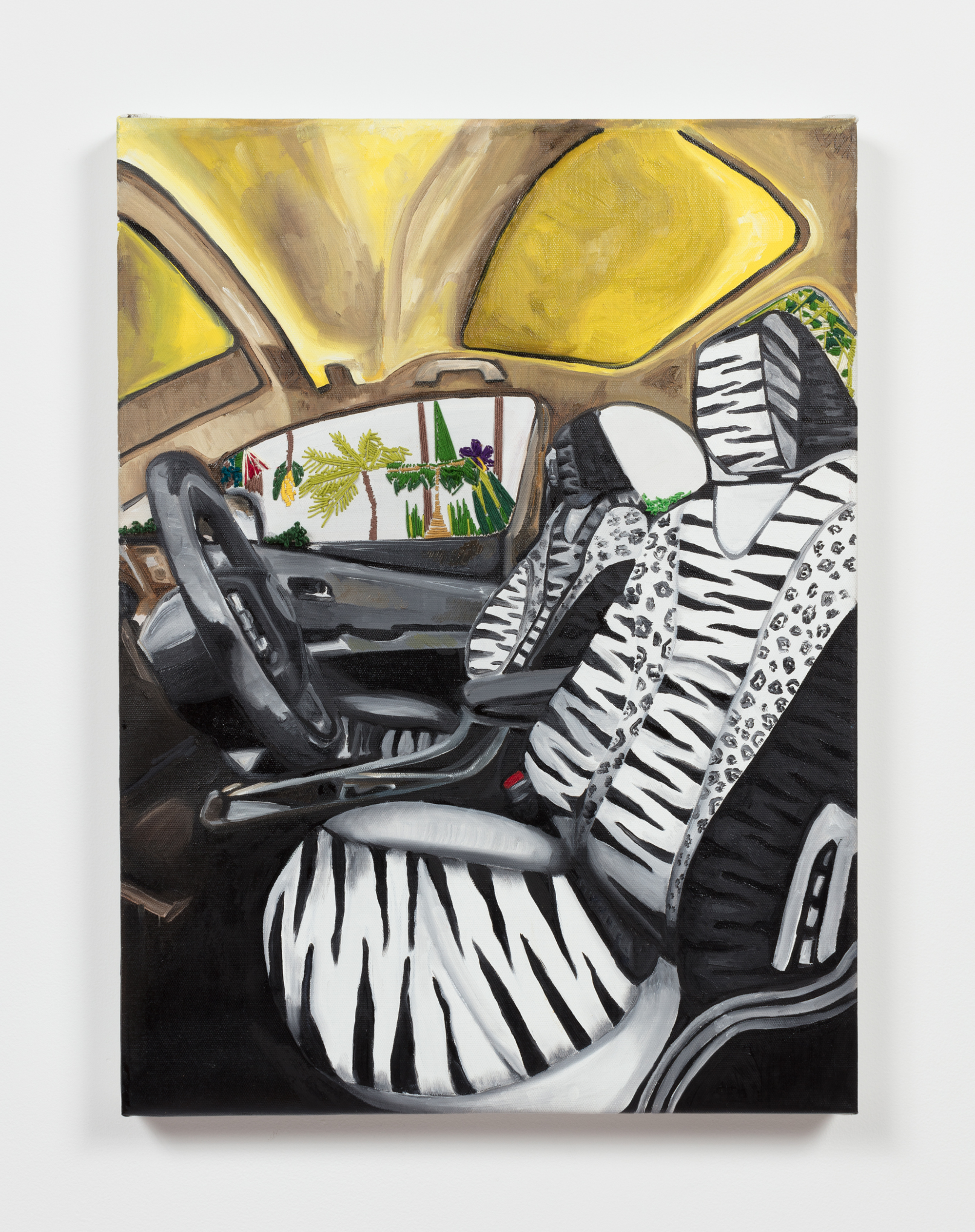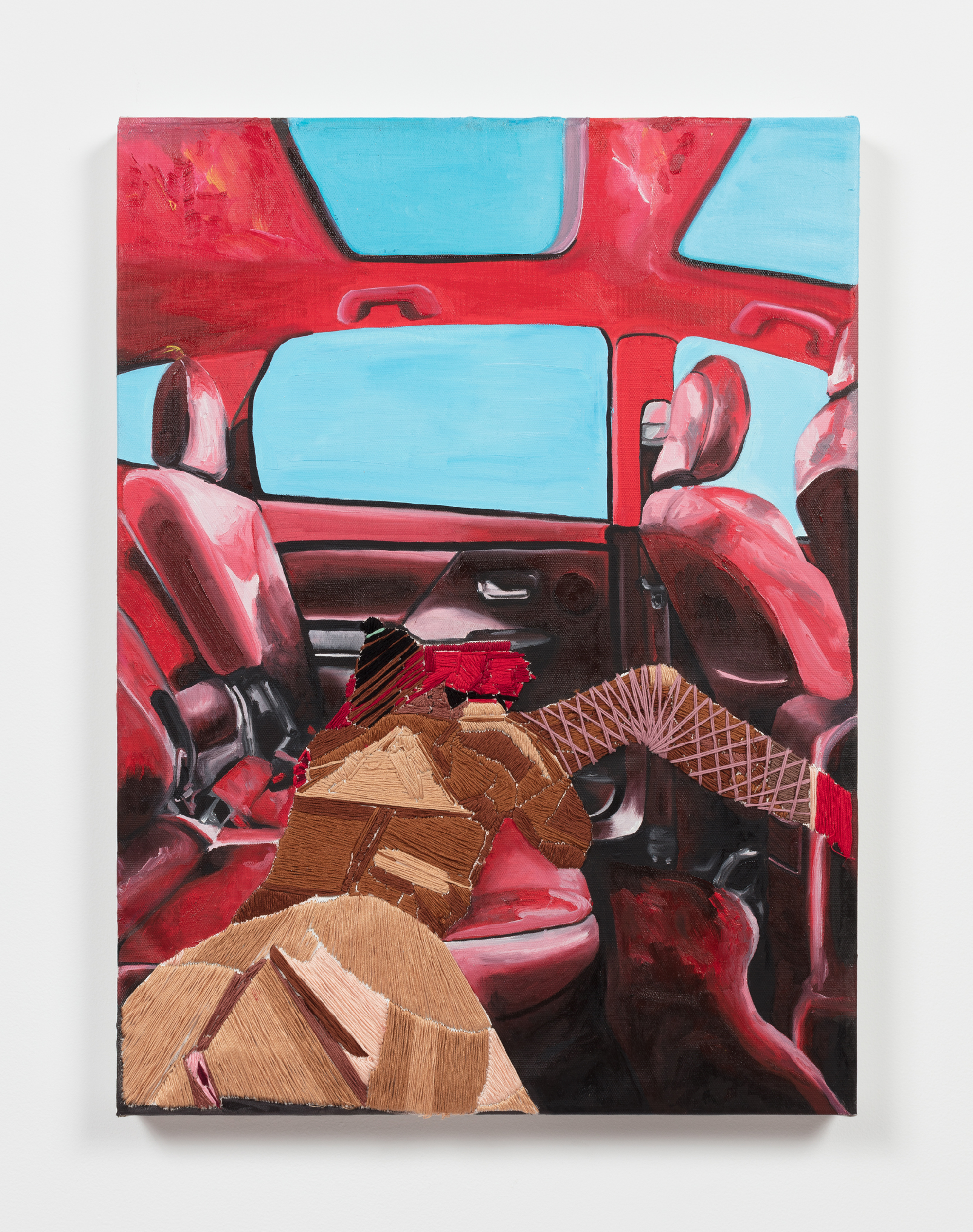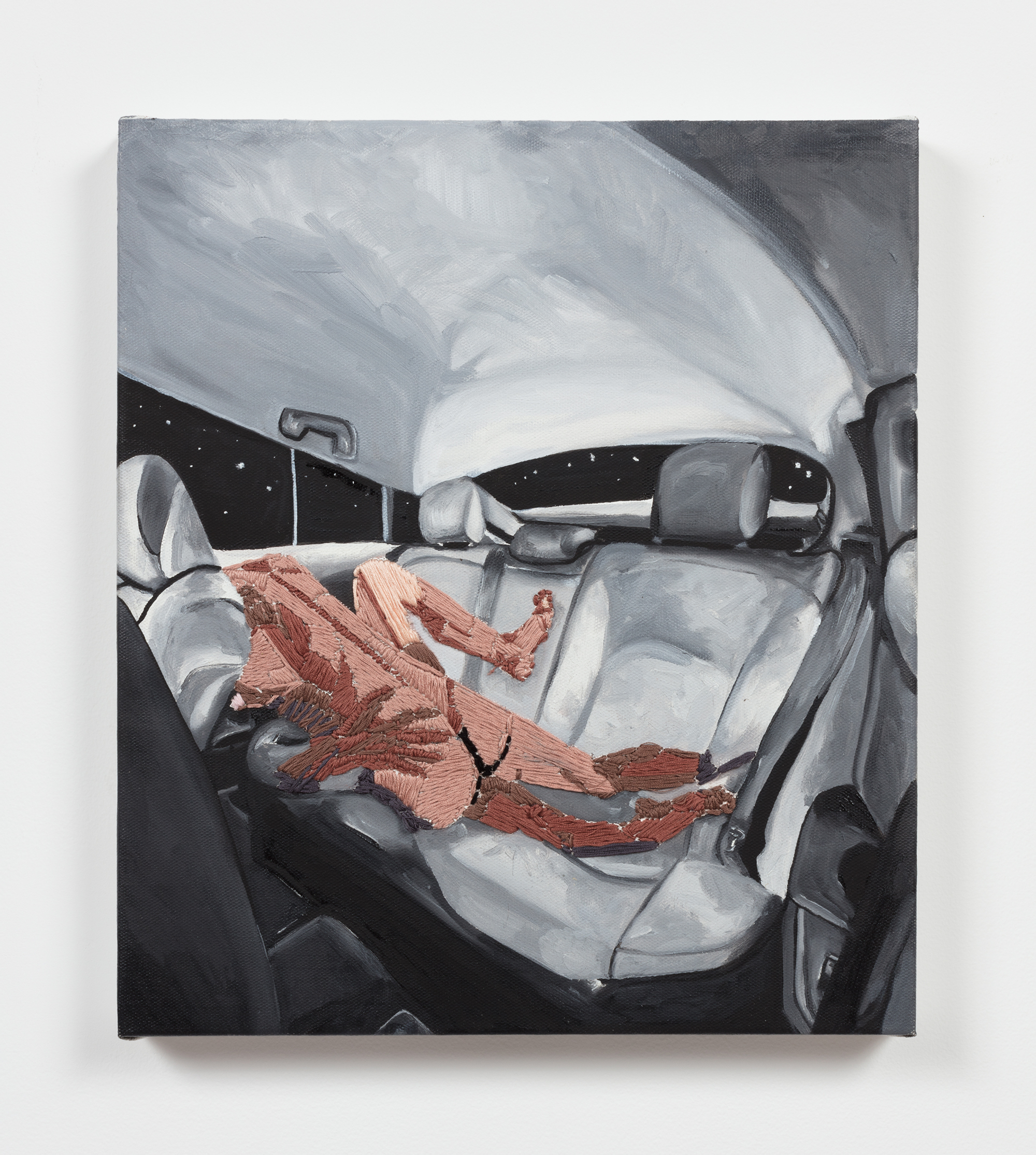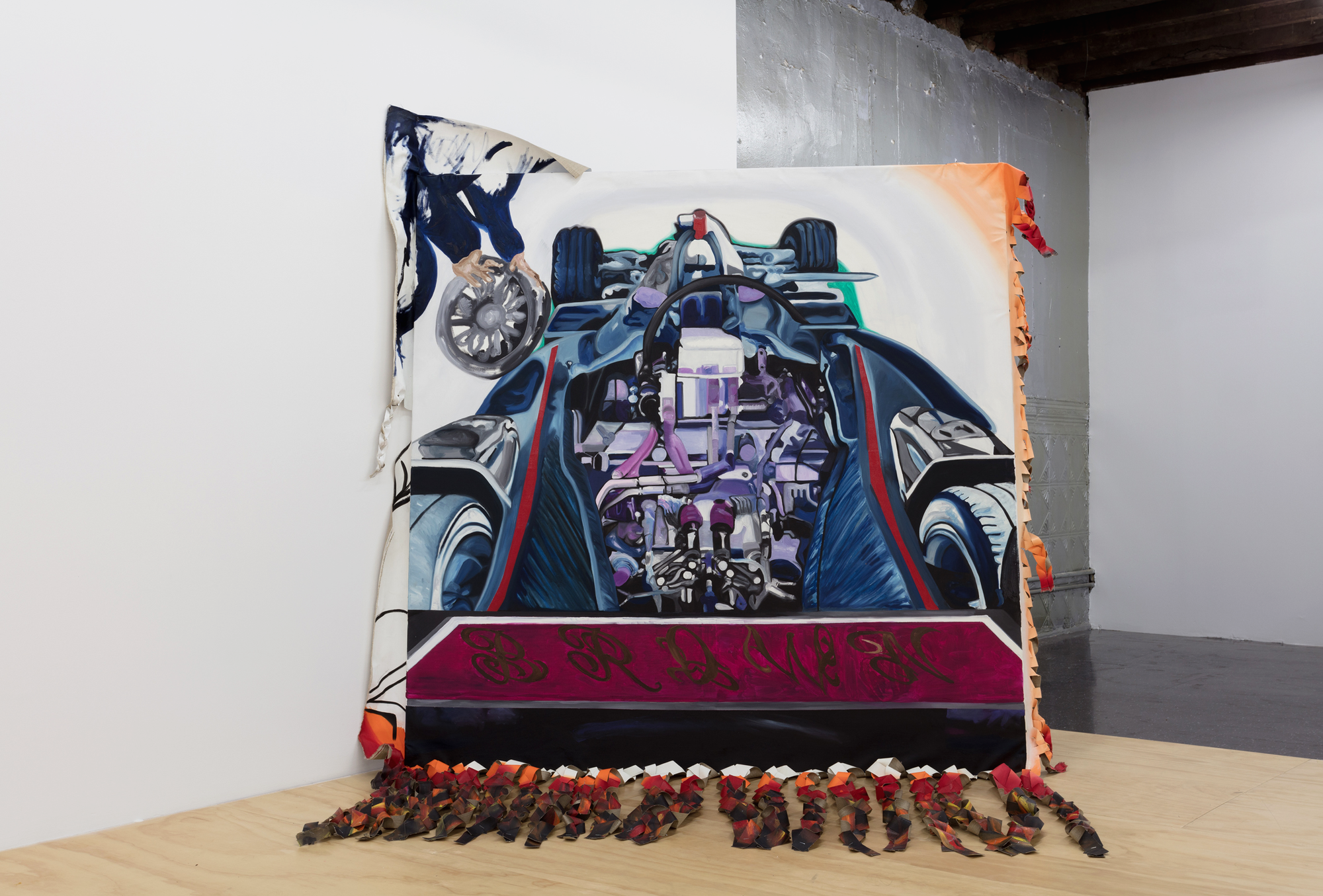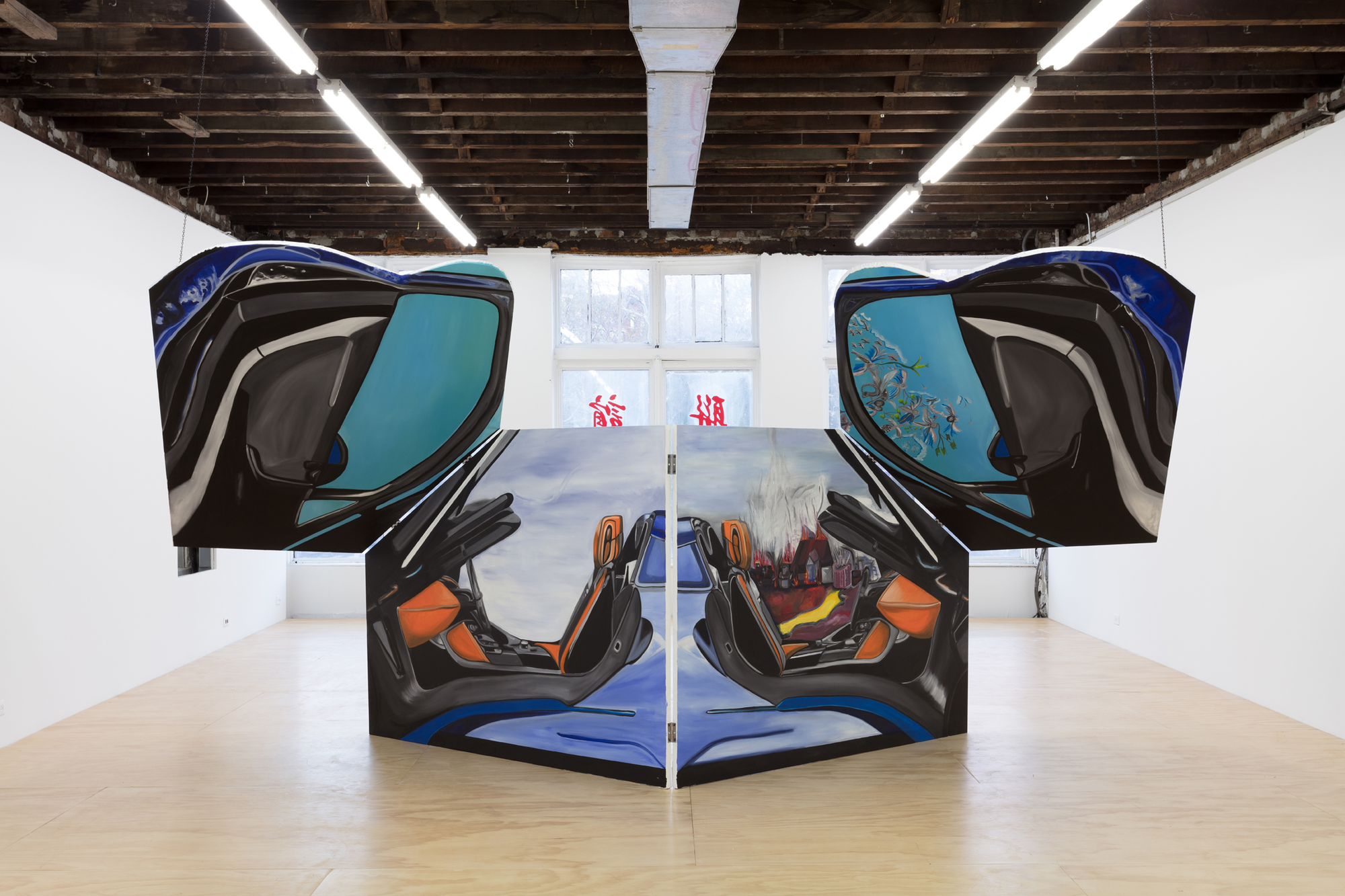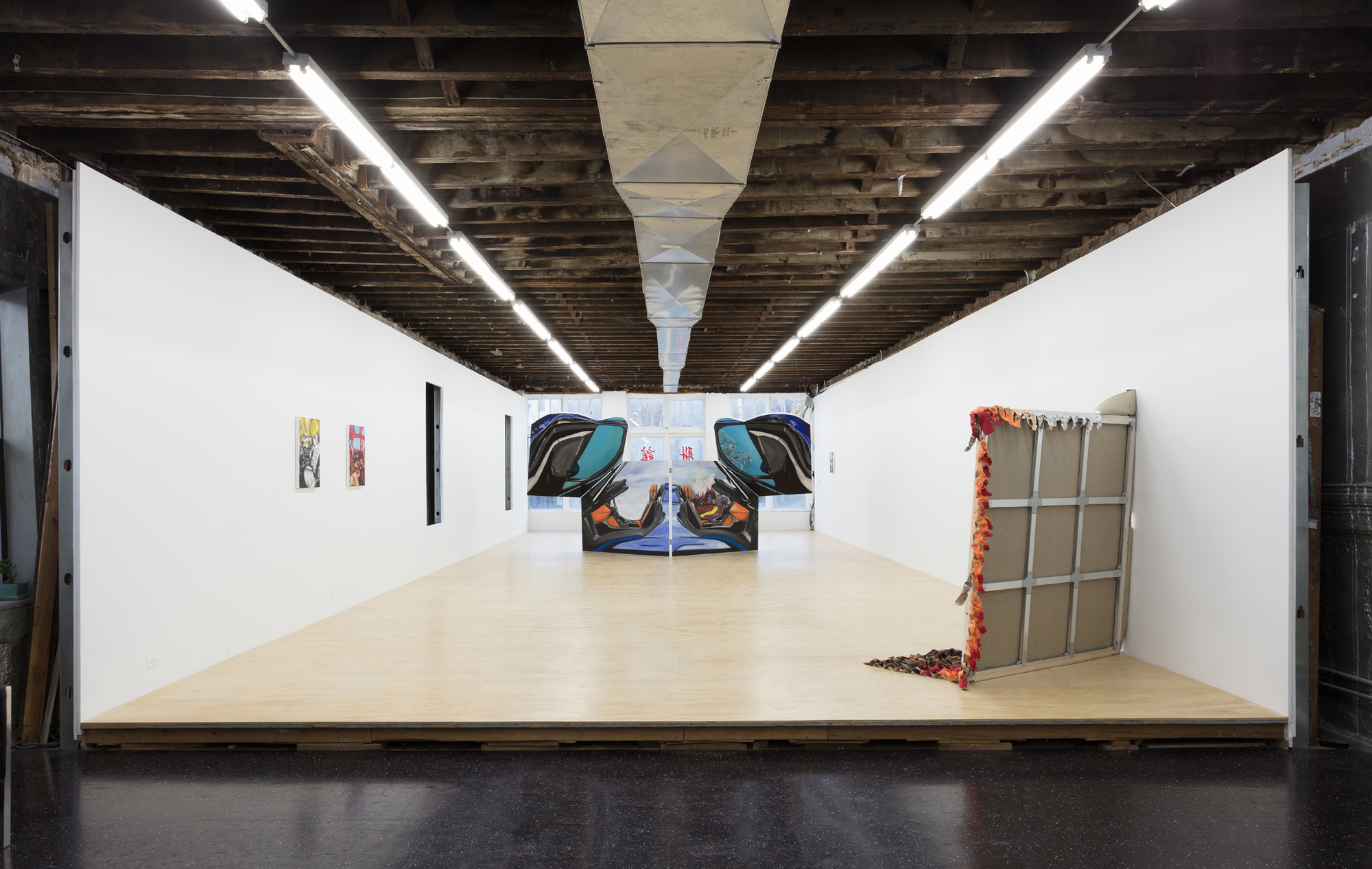For her first show at the gallery, Frieda Toranzo Jaeger presents a new series of oil paintings depicting automobile interiors, some of which are peopled by handembroidered figures. The exhibition’s title, die Windschutzscheibe (The Windshield), suggests a sort of interface – operative in the experiences of painting and driving alike – linking passivity and action, stasis and mobility, the physical and the virtual. At the level of perception, such activities unfold a strange third space that is neither inside nor outside the subject, not entirely conscious or unconscious: here in the body in the car on the road on the canvas. Meanwhile, with Uberization and the evolution of driverless cars and AI, humans happily give up more and more of the agency, attention and control once associated with getting around, which is maybe why the erotic life depicted in Toranzo Jaeger’s paintings tends to happen in the passenger seats. Here, freedom of movement becomes another, possibly kinky form of submission. These are electric, hybrid and smart cars: Prius, BMW 8i, as well as recent Tesla and Formula E models, all of which bring a new clean, algorithmic silence to the experience of auto-mobilization. This exhibition happens to share its title with a Matisse painting from 1917… a very early view from inside a moving vehicle… but maybe every painting is a kind of mental windscreen?
Windows Open, AC On (Hybrid), the largest work in the show, is comprised of four canvases interconnected by door hinges. The psychic topology of automobilized space-time is somehow echoed in the folding, butterfly wing construction of the painting’s multi-panels, which can be opened and closed at will. Mrs. Brown’s Formula E presents a hovering perspective into the exposed engine/guts of an electric racecar, as if only momentarily paused for a fast tire-change in mid-race. In this work, the painting exceeds the picture plane as areas of canvas spill off the stretcher in fringes of sliced, hand-braided flames…
In three smaller works, paintings of Prius and Tesla interiors are hand-embroidered with lesbian sex scenes, adding an excessive bodily thickness to a painted image most likely sourced online. Toranzo Jaeger reminds us that embroidery (especially in pre-Columbian cultures), too, has always been about mobility: the circulation of graphic codes and meanings via the mobile bodies it adorns. The rhythmic piercing of a painting with a needle is a decoration that seems to insist on othering the aesthetic object… taking the medium for a ride.
